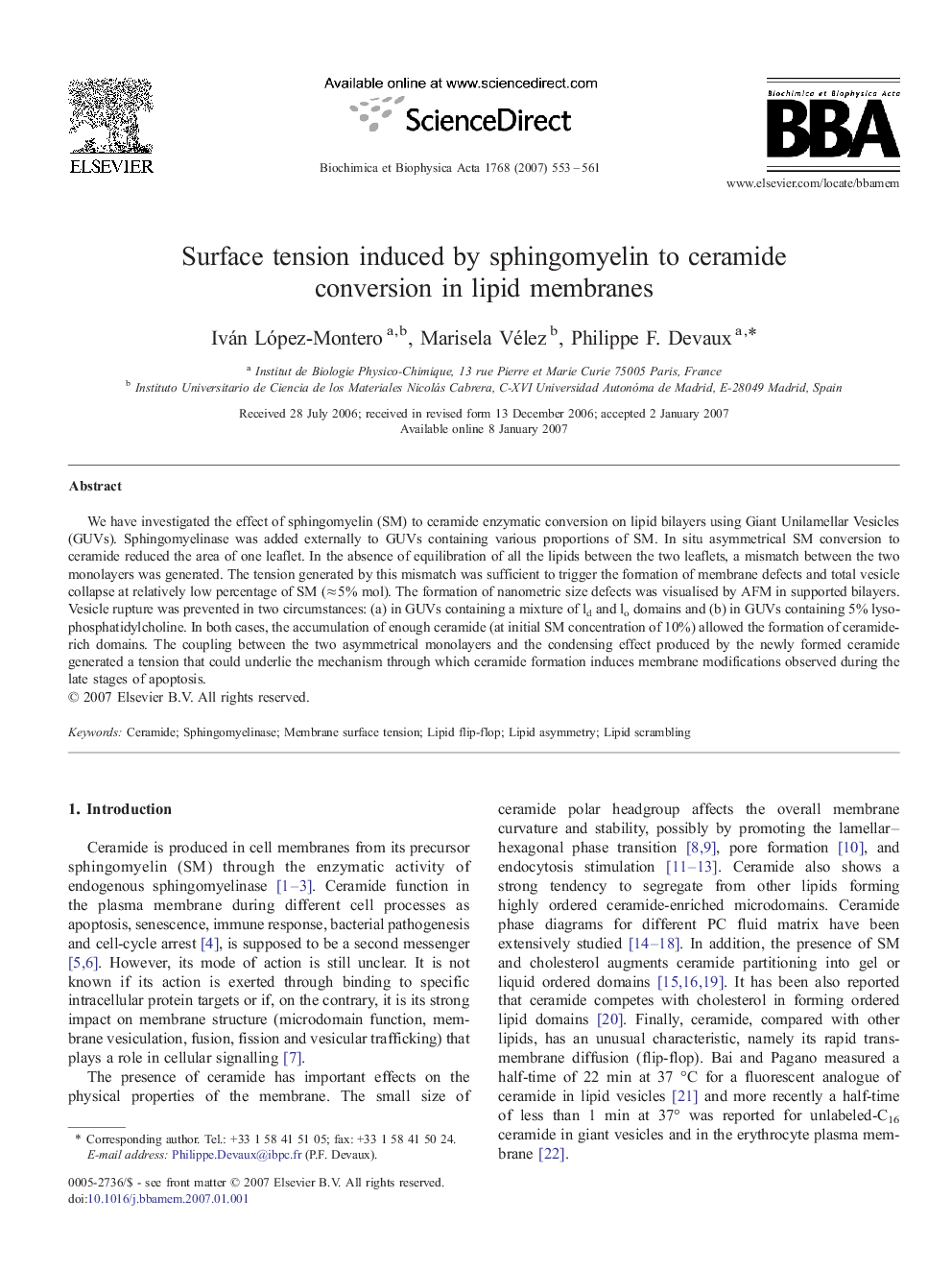| Article ID | Journal | Published Year | Pages | File Type |
|---|---|---|---|---|
| 1945854 | Biochimica et Biophysica Acta (BBA) - Biomembranes | 2007 | 9 Pages |
We have investigated the effect of sphingomyelin (SM) to ceramide enzymatic conversion on lipid bilayers using Giant Unilamellar Vesicles (GUVs). Sphingomyelinase was added externally to GUVs containing various proportions of SM. In situ asymmetrical SM conversion to ceramide reduced the area of one leaflet. In the absence of equilibration of all the lipids between the two leaflets, a mismatch between the two monolayers was generated. The tension generated by this mismatch was sufficient to trigger the formation of membrane defects and total vesicle collapse at relatively low percentage of SM (≈ 5% mol). The formation of nanometric size defects was visualised by AFM in supported bilayers. Vesicle rupture was prevented in two circumstances: (a) in GUVs containing a mixture of ld and lo domains and (b) in GUVs containing 5% lyso-phosphatidylcholine. In both cases, the accumulation of enough ceramide (at initial SM concentration of 10%) allowed the formation of ceramide-rich domains. The coupling between the two asymmetrical monolayers and the condensing effect produced by the newly formed ceramide generated a tension that could underlie the mechanism through which ceramide formation induces membrane modifications observed during the late stages of apoptosis.
